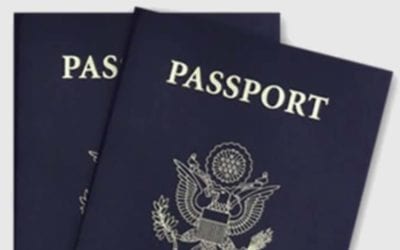We have all heard of Predator drones striking terrorist targets inside Pakistan, Yemen and other countries. There, these unmanned aircraft can fly with impunity. But, what about here at home? Drones area already being used to monitor our borders, realtors use them for aerial shots of properties, police departments (see video above) are using drones more and more, and this is just the beginning.
A little-noticed section of the latest FAA legislation pays attention to the development of drones and the Consumer Travel Alliance (CTA) has their antennas tuned to coming changes and how they will affect airline passenger safety.
CTA has already met with drone manufacturer representatives and with pilots to discuss the development of the commercial drone market in the U.S. The technology is out of the bottle, now the nation must figure out how to safely mix manned and unmanned aircraft from small, hand-launched, model-sized planes to unmanned planes the size of 747s.
Whether we like it or not, drone usage in the U.S. airspace is growing. It is growing quickly. Some of the concepts are beyond current public imagination, such as the remote piloting of large, 747-sized cargo aircraft across oceans that may reduce pilot requirements in the future. But that is a subject for future articles.
Today, the market for domestic drones is the focus of a sliver of Washington’s aviation watchdog agencies. More importantly, Congress has mandated in the FAA bill a full report and a plan to integrate drones (unmanned aerial vehicles, or UAVs) into the nation’s skies by September 2015.
…under the FAA bill, proponents envision huge fleets of drones operated nationwide by states, local governments and companies.
Unmanned aircraft can be as small as a hummingbird or have the wingspan of an airliner. Among their possible uses are environmental monitoring, fire protection and surveillance of suspected criminals. Other potential roles include industrial jobs such as checking power lines and tracking equipment.
Drone manufacturers, local governments and business groups have long complained about the FAA’s go-slow approach to allowing unmanned and manned aircraft to share the same airspace. The bill, among other things, requires the FAA to move expeditiously to phase in operation of smaller drones and establish six test areas nationwide to demonstrate safety technology.
The UAV realm is an aviation market that will grow dramatically over the coming decade and the need for systems that can operate in an integrated manner is accepted by all parties.
“There is a huge potential market for civilian and commercial uses of unmanned aircraft systems,” says Ben Gielow, general counsel for the industry group Association for Unmanned Vehicle Systems International.
The market will almost double over the next decade to $11.3 billion, according to a March estimate by the Teal Group in Fairfax, Va., which analyzes the aerospace and defense industries.
Commercial pilots have raised safety concerns. Although pilots are required to spend time flying planes and are tested on their abilities to hold licenses, no similar rules exist for the controllers of remote aircraft. Likewise, the FAA doesn’t certify drones like passenger planes against engine failure or wings falling off.
In discussions with Capt. Lee Moak, president of the Air Line Pilots Association (ALPA), he noted that these UAVs are unmanned, but that they still require pilots on the ground at control stations to remotely pilot the aircraft. He points out that there are currently no certification regulations for these ground-based unmanned aircraft operators similar to the stringent requirements imposed by the FAA on passenger aircraft and on even private pilots who require testing to receive pilot’s licenses.
He noted in other interviews that there have already been problems associated with pilots and drone control.
Despite their many successful flights in Afghanistan, drones occasionally crash.
In August, for instance, an unmanned Shadow drone collided with a C-130 cargo plane. The cargo plane had to make an emergency landing at a base in eastern Afghanistan, but nobody was injured.
A drone occasionally goes awry here, too. In August 2010, the military considered shooting down a Navy Fire Scout drone that wandered close to restricted airspace near Washington, D.C., after controllers lost their link to the drone. But controllers regained contact.
In a freewheeling discussion with CTA about drones and their inevitability, ALPA members noted that in the future, long-rang flights might be able to fly with fewer pilots — A pilot on the ground could serve as a remote pilot should the pilots aboard the aircraft need rest. The pilots I spoke with don’t envision 747-sized aircraft flying without a pilot in the cockpit. However, they do admit that remote pilots may be suggested as a solution for long-range flights.
It is a new world that is hurtling towards us rapidly. The FAA has a three-year deadline to draw up plans for the manned and unmanned world to live together in the skies. This will be a regulatory battle between industries and unions that will shake the foundations of the aviation community.

Charlie Leocha is the President of Travelers United. He has been working in Washington, DC, for the past 14 years with Congress, the Department of Transportation, and industry stakeholders on travel issues. He was the first consumer representative to the Advisory Committee for Aviation Consumer Protections appointed by the Secretary of Transportation from 2012 through 2018.


